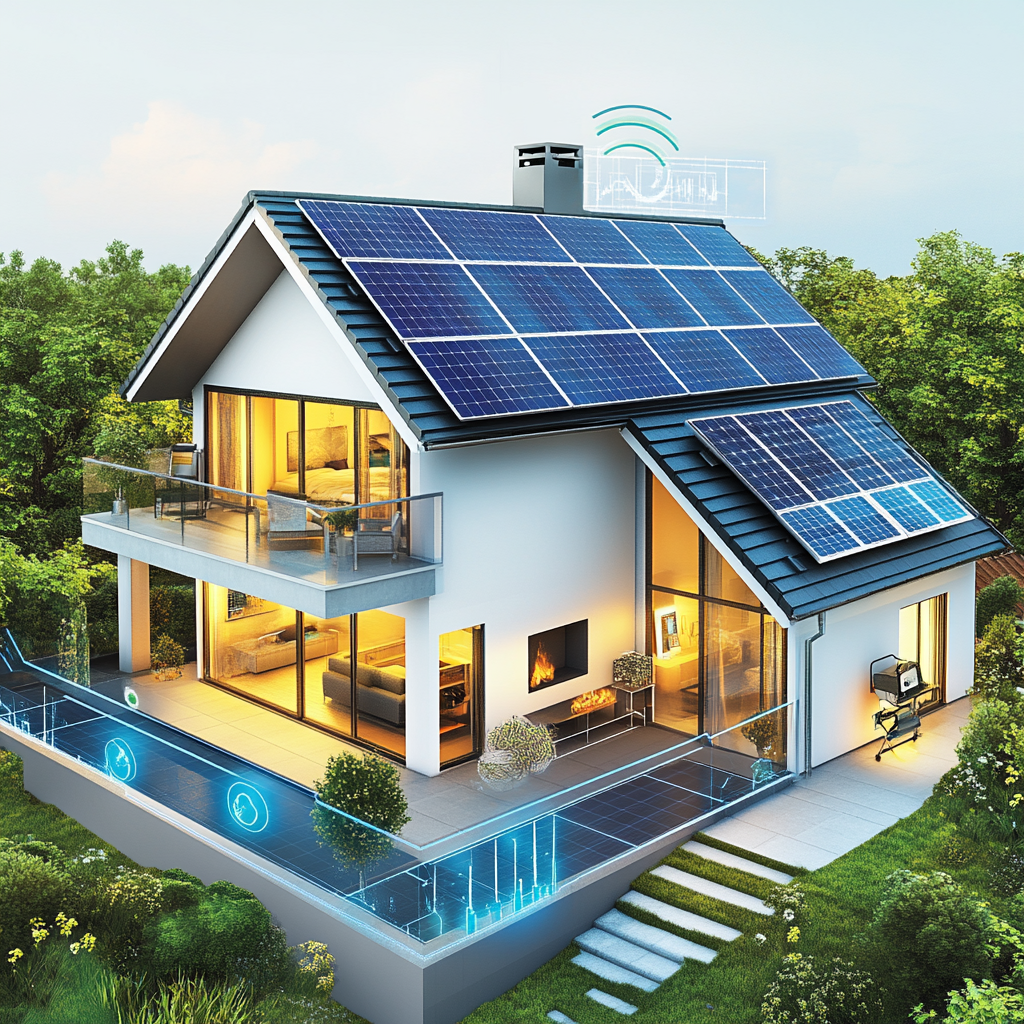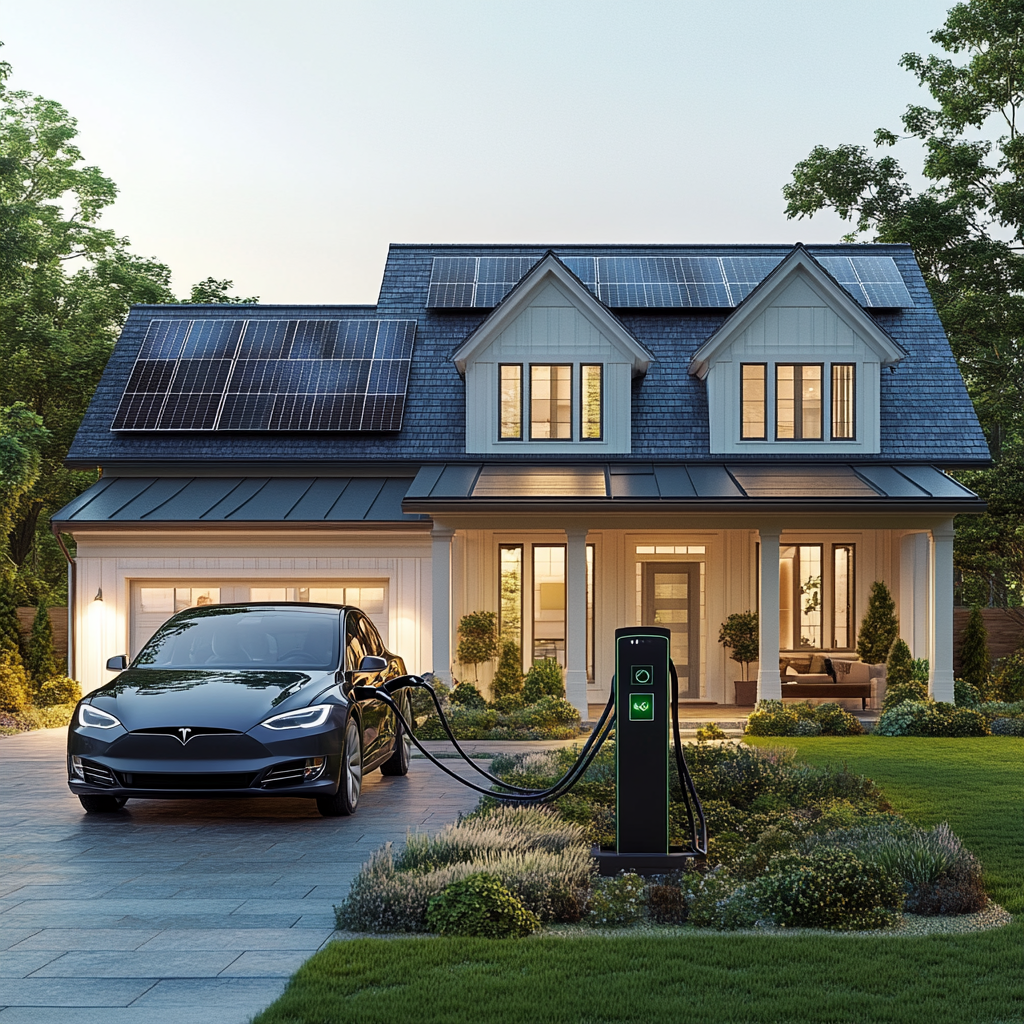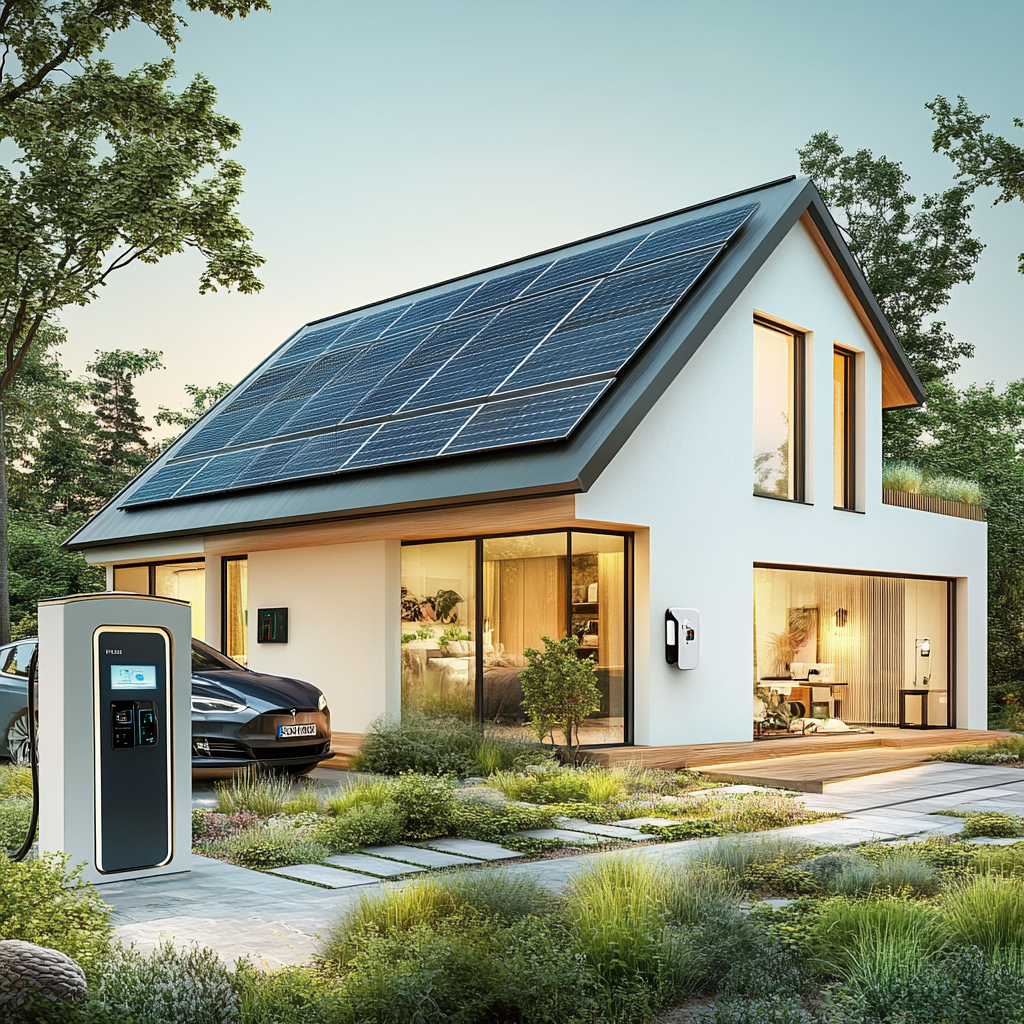As climate change continues to be a global concern, the demand for sustainable living solutions is on the rise. One of the most exciting advancements in this space is the integration of solar power into smart homes. Solar-powered smart homes combine energy-efficient technology with renewable energy sources, creating eco-friendly living environments that reduce carbon footprints and energy bills. In this article, we’ll explore what solar-powered smart homes are, their benefits, and how they represent the future of sustainable living.
What Are Solar-Powered Smart Homes?
A solar-powered smart home is an innovative living space equipped with solar panels that generate renewable energy. These homes are integrated with smart technology, allowing homeowners to manage and optimize energy consumption efficiently. From smart thermostats to energy monitoring systems, these homes create an intelligent and sustainable living experience.
How Do Solar-Powered Smart Homes Work?
Solar-powered smart homes use photovoltaic (PV) panels installed on rooftops to capture sunlight and convert it into electricity. This renewable energy is then stored in batteries or used immediately to power various smart devices within the home. Smart systems monitor energy production and usage, adjusting the home’s energy consumption to ensure maximum efficiency and minimal waste.

Benefits of Solar-Powered Smart Homes
Solar-powered smart homes are not just about generating renewable energy—they offer a wide range of benefits that align with modern sustainability goals. Here’s why they’re becoming a preferred choice for homeowners:
1. Reduced Energy Bills
By harnessing solar energy, homeowners can significantly reduce their electricity bills. Smart energy management systems track energy production and consumption, allowing users to optimize usage and minimize reliance on the grid, especially during peak hours.
2. Lower Carbon Footprint
Solar-powered smart homes contribute to a lower carbon footprint by using renewable energy instead of fossil fuels. By integrating energy-efficient appliances and smart devices, these homes reduce energy waste, making them an eco-friendly option for sustainable living.
Latest Trends in Solar-Powered Smart Home Technology
As technology advances, solar-powered smart homes are becoming more efficient and accessible. Here are some of the latest trends driving this innovation:
1. AI-Driven Energy Management Systems
Modern solar-powered homes are equipped with AI-driven energy management systems that optimize energy consumption based on real-time data. These systems monitor weather conditions, energy usage patterns, and solar production to adjust settings automatically, ensuring maximum efficiency.
2. Integration with Electric Vehicle (EV) Charging Stations
Many solar-powered smart homes are now integrating EV charging stations, allowing homeowners to charge their electric vehicles using renewable energy. This integration reduces dependence on fossil fuels and maximizes the use of solar power, creating a complete green energy ecosystem.

Essential Features of Solar-Powered Smart Homes
If you’re considering transitioning to a solar-powered smart home, there are a few essential features to look for that can maximize sustainability and efficiency:
1. Solar Battery Storage Systems
A good solar-powered home should have a battery storage system to store excess energy generated during the day. This allows homeowners to use stored energy during the night or on cloudy days, reducing reliance on the grid.
2. Smart Thermostats and Climate Control
Smart thermostats optimize energy usage by adjusting heating and cooling systems based on real-time data and weather conditions. By integrating these devices with solar energy, homeowners can efficiently manage indoor temperatures, ensuring comfort without wasting energy.
3. Real-Time Energy Monitoring
Energy monitoring systems provide real-time data on solar energy production and consumption. This data allows homeowners to adjust their usage patterns, ensuring they get the most out of their solar energy system.
Challenges of Solar-Powered Smart Homes
While solar-powered smart homes offer numerous benefits, they come with challenges that homeowners should be aware of:
1. High Initial Installation Cost
The initial installation cost of solar panels and smart systems can be significant. However, many regions offer incentives, such as tax credits and rebates, to offset the expense and encourage homeowners to adopt renewable energy solutions.
2. Weather Dependency
Solar-powered homes rely on sunlight for energy production, making them weather-dependent. While battery storage systems and grid connectivity provide backup, it’s essential to have contingency plans for extended periods of cloudy weather.
FAQs About Solar-Powered Smart Homes
Are solar-powered smart homes suitable for all climates?
Yes, but they perform best in sunny climates. Homes in regions with less sunlight may require larger solar panel setups or additional energy storage to compensate.
How much can I save on energy bills with a solar-powered smart home?
Savings vary based on location and energy consumption, but most homeowners see a significant reduction in energy costs, sometimes cutting bills by 50% or more.
What is the average cost of installing a solar-powered smart home system?
The cost can range from $10,000 to $30,000, depending on the size and features of the system. Incentives and rebates can help reduce this amount.
Can I charge my electric vehicle with a solar-powered home system?
Yes, integrating an EV charging station with a solar-powered home is a great way to maximize renewable energy usage and reduce reliance on fossil fuels.
Do solar-powered smart homes require maintenance?
Minimal maintenance is required, mainly cleaning the panels and ensuring the system operates efficiently. Most modern setups come with monitoring systems to alert homeowners of any issues.
Conclusion
Solar-powered smart homes represent the future of sustainable living. By integrating renewable energy with smart technology, these homes offer a practical solution for reducing energy consumption, minimizing carbon footprints, and maximizing comfort. As technology continues to evolve, solar-powered homes will become more accessible, paving the way for a greener, more sustainable future.

